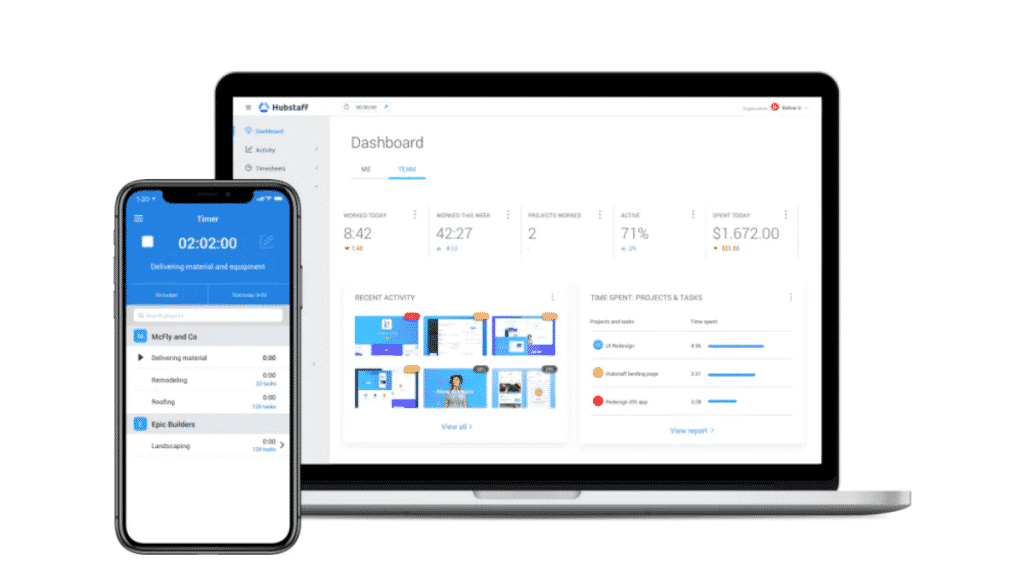Activity monitors are a great way to track employee productivity. By tracking their activity, you can see which employees are working hard and those who could do with a little more encouragement or push. These software tools can also help you identify patterns in your team’s productivity, allowing you to make changes that improve your team’s overall output.
There are several different types of activity monitors, and each comes with a unique set of features that may or may not be important to you.
In this article, we share simple ways on how to use an activity tracker to monitor employees and how productive they are.
Before you can track employee productivity, you need to establish a baseline. This entails having employees use their activity monitors for a week while they work and then using that data to establish what level of productivity is typical on an average day.
Once you have established a baseline, you can then begin tracking productivity more closely by looking at the activity monitor data you collect when employees may be working harder or less hard than usual.
Look for Deviations
After establishing a baseline, begin paying attention to the activity monitor data during days when employees seem to be working harder or less than normal. If it seems like an employee is deviating from their usual productivity, observe them in person if possible to determine why they are either more or less energetic than usual.
Having this information can help you understand what factors may be impacting employee productivity and adjust your approach accordingly.
Use the Data to Adjust Goals
Once you understand how you can use activity monitors to track employee productivity, use this data to set realistic goals for employees. For example, if you know that an employee’s average level of productivity is 10,000 steps per day, but they only achieved 8,000 steps on a day when they were working particularly hard, you may want to set a goal for them of 12,000 steps for the next day.
By using activity monitor data to adjust goals, you can help employees stay on track and meet your productivity expectations.
Offer 360-Degrees Feedback
We highly recommend using activity monitor data to provide 360 degrees feedback to employees. This means giving employees feedback based on their productivity levels as measured by their activity monitors.
For example, suppose you notice that an employee’s productivity is lower than usual on days when they do not exercise before or after work. In that case, you may want to ask them about their workout schedule and ensure that they are exercising in ways that won’t impact their productivity.
Add a Time Tracking Tool
Activity monitor data is an excellent way to learn what factors impact your employees’ productivity. Still, it may not give you an accurate picture of how long employees work every day.
By supplementing activity monitor data with time tracking software, you can better understand how long employees are working and where there may be some room for improvement.
Monitor Employee Digital Activities
To better track employee productivity, you can use activity monitor data to uncover trends about how employees spend their digital time. In the modern workplace, many employees work remotely or after hours at least some of the time.
They may also work on personal tasks during their breaks or otherwise engage with digital devices that impact their ability to be productive working.
By tracking employee digital activities, you can understand how employees are using their time and whether they are being productive when they should be working.
Get People Back on Track
If you notice that an employee is not reaching their usual level of productivity, try to determine what factors are impacting their ability to work. Does the activity monitor data show they aren’t moving as much during work hours? Do they leave for lunch at a different time every day or tend to have other significant breaks? Are they working on personal tasks during their work hours?
Once you have a good understanding of what may be impacting employee productivity, try to get them back on track by adjusting their goals, providing feedback or setting limits on their use of digital devices.
Now is a Good Time to Implement an Activity Monitor
Activity monitors can be incredibly valuable for tracking employee productivity in the modern workplace. By using data collected by these tools to adjust goals, provide feedback, and track digital activities, you can help employees be more productive which is key in helping your business reach its goals.
